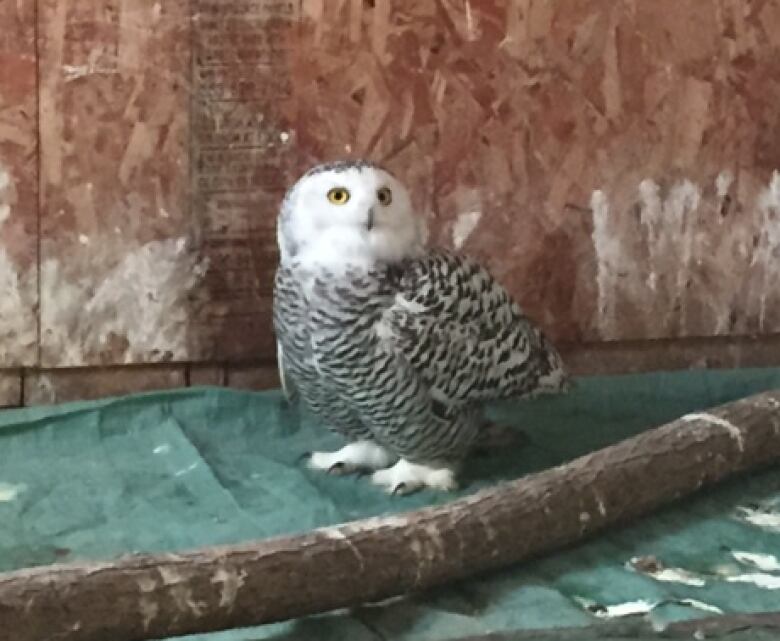Manitoba wildlife refuge sees spike in starving, injured snowy owls
Population boom could be putting pressure on the birds to fly south for prey, director says
A local refuge for Manitoba wildlife is taking in more snowy owls than usual for this time of year.
Too weak to fly and in need of care,15 snowy owls from across the province have been brought to theWildlife Haven Rehabilitation Centre inIle des Chnes, Man., in the past two weeks.
In most cases the owls died by the time they reached the centre in various states of emaciation, dehydration orstarvation. Only five remain alive.
'This is very unusual'
At this time last year, the centre only hadthree snowy owlscome into its care.Staff saidthey've seen more this yearneeding care than in any yearin the last 10 years.

"People are pretty amazed that we're getting this many, but they're also very concerned: why are we getting so many and is it going to continue? That's our question,too."
The cause behind the spike could come down to a snowy owl population boom this year up north, he said. With morecompetitionfor the same prey namely Arcticlemmings, a dietary staple for the birds it could be the case that some snowy owls are being driven to starvation or further south in search of food.
"Unfortunately, by the time they get down southand when I say 'south' it can be as far north as The Pas or Thompsonthey're already starving and they get so weak they're not able to fly, so they can't catch any food to replenish themselves," Diawol said.
'Circle of life'
James Duncan, an owl biologist with Manitoba Conservation, says there's a reason for the seemingly sudden influx of snowy owls.
"Every number of years they have a great reproductive year up north, and they provide a larger number of young than they normally do because lemmings are in great supply," he told CBC News on Monday.
Duncan said if there is a larger number of young owls this year, it's normal that some of them would not survive the migration south to Manitoba.
"A high number of young don't make it to be a year old. That's kind of the circle of life," he explained.
"We're encountering some animals that are having a tough go of it, but not every snowy owl can survive the year, unfortunately."
Diawolsaid alot of the snowy owls that get into trouble are juveniles that aren't as good at adapting to change as older birds.
"It's obviously due to a lack of food somewhere or somehow, we're not quite sure exactly yet," hesaid. "But it can be a balance of highpopulationsof the owls and low populations of small rodents."
Duncan said after a bird survey is conducted over the Christmas holidays, he'll know for sure if 2015 is a record year for snowy owl numbers.
TheWildlife Haven Rehabilitation Centrehopes to release the five individuals currently in its care back where they were first found.In the meantime, the birds at the centre will stay in their enclosures while they're nursed back to health on a diet of frozenrats and mice.
Diawol added that inmost casesif you come across an owl, it likely doesn't need your help. But, he said, people should phone the centre at204-878-3740if they ever have questions or come across an injured wild animal.













_(720p).jpg)


 OFFICIAL HD MUSIC VIDEO.jpg)
.jpg)



























































































